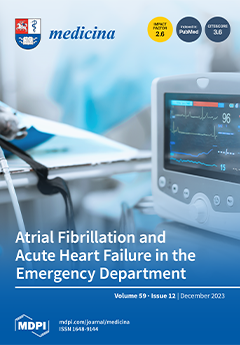Background and objectives: Multisystem inflammatory syndrome in children (MIS-C) poses challenges to the healthcare system, especially with frequent heart involvement. The current retrospective observational study aims to summarize the type and degree of cardiovascular involvement in children with MISC and to find possible associations between laboratory, inflammatory, and imaging abnormalities and the predominant clinical phenotype using a cluster analysis.
Material and methods: We present a retrospective observational single-center study including 51 children meeting the MIS-C criteria.
Results: Fifty-three percent of subjects presented with at least one sign of cardiovascular involvement (i.e., arterial hypotension, heart failure, pericardial effusion, myocardial dysfunction, pericarditis without effusion, myocarditis, coronaritis, palpitations, and ECG abnormalities). Acute pericarditis was found in 30/41 of the children (73%) assessed using imaging: 14/30 (46.7%) with small pericardial effusion and 16/30 (53.3%) without pericardial effusion. The levels of CRP were significantly elevated in the children with pericarditis (21.6 ± 13 mg/dL vs. 13.9 ± 11 mg/dL,
p = 0.035), and the serum levels of IL-6 were higher in the children with small pericardial effusion compared to those without (191 ± 53 ng/L vs. 88 ± 27 ng/L,
p = 0.041). Pericarditis with detectable pericardial effusion was significantly more frequent in the female vs. male subjects, 72% vs. 30% (
p = 0.007). The hierarchical clustering analysis showed two clusters: Cluster 1 includes the children without cardiovascular symptoms, and Cluster 2 generalizes the MIS-C children with mild and severe cardiovascular involvement, combining pericarditis, myocarditis, heart failure, and low blood pressure. Also, subjects from Cluster 2 displayed significantly elevated levels of fibrinogen (5.7 ± 0.3 vs. 4.6 ± 0.3,
p = 0.03) and IL-6 (158 ± 36 ng/mL vs. 66 ± 22 ng/mL,
p = 0.032), inflammatory markers suggestive of a cytokine storm.
Conclusions: Our results confirm that children with oligosymptomatic MIS-C or those suspected of long COVID-19 should be screened for possible cardiological involvement.
Full article






